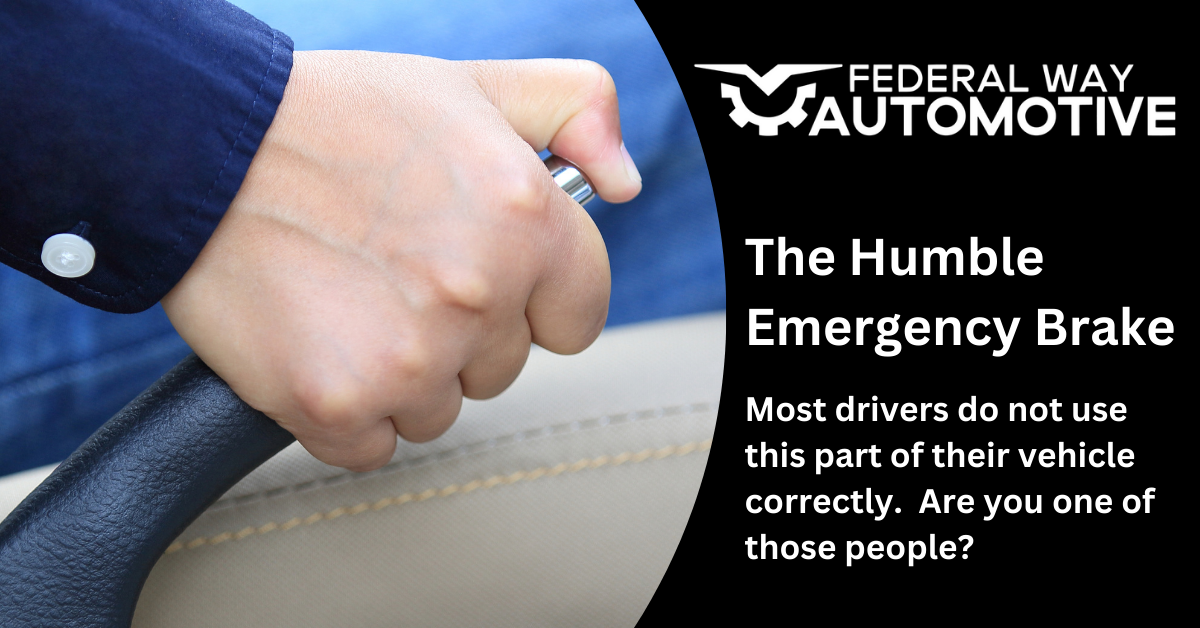In the diverse driving conditions of Federal Way, WA, the emergency brakes are an unsung hero, providing peace of mind whether you’re parked at the bustling Commons Mall or navigating the steep inclines near Dash Point. As a vital part of your vehicle’s safety arsenal, the proper use and regular maintenance of your emergency brake, also known as the parking brake, handbrake, or e-brake, are essential. Let’s delve into the effective use of your emergency brake, ensuring you’re prepared for every parking situation and the rare instance of main brake failure.
The Fundamentals of Emergency Brakes
Operating independently from the main hydraulic brake system, the emergency brake is your backup safety net. Its cable-based mechanism is designed for reliability, separate from the main system to ensure that it stands by in case of hydraulic failure. But beyond emergencies, its day-to-day use in securing a parked vehicle is just as important.
Using Emergency Brakes for Secure Parking
Parking on an Incline:
- Turn your wheels away from the curb: This ensures that if your car starts to roll, it will move away from traffic.
- Engage the emergency brake: Before shifting into park (for automatic transmissions) or into first gear (for manual transmissions), apply the emergency brake to minimize stress on the transmission.
Parking on a Decline:
- Turn your wheels toward the curb: Similar logic applies here; if the car rolls, it will roll into the curb and stop.
- Engage the emergency brake: Then shift into park or reverse gear, depending on your transmission type, to secure the vehicle further.
Emergency Situations on the Move
The use of the emergency brake while in motion is a measure of last resort, reserved for instances when the primary brakes are non-responsive. If such a rare event occurs:
- Pull the brake gently but firmly: A sudden yank can lock the rear wheels, leading to a skid. If your vehicle has a foot-operated emergency brake, apply steady pressure.
- Keep the steering wheel steady: Avoid making sharp turns while the emergency brake is engaged.
- Release the brake slowly once the vehicle is under control: This helps prevent the car from jerking or losing control.
The Necessity of Regular Maintenance for your Emergency Brakes
Federal Way Automotive emphasizes the importance of routine inspections and maintenance for all safety components, including the emergency brake. Over time, cables may stretch or wear, which can lead to a decrease in effectiveness. We recommend including the emergency brake check in your regular service schedule, ensuring it’s always ready when you need it.
Your Safeguard for Federal Way Roads
Whether you’re stopping by Steel Lake Park or driving through the rainy season, the emergency brake is more than a mere feature—it’s a safeguard, a protector, and a key component of your vehicle’s safety measures. At Federal Way Automotive, we are committed to educating our drivers and providing top-notch service to ensure every part of your vehicle, including the emergency brake, functions flawlessly. Trust us to keep you and your vehicle secure, no matter where the road takes you.


